John Emory Power was the world’s first full-time copywriter.
In the 1800’s.
He began writing ads for the agency Lord & Taylor, which caught the attention of another agency called Wanamaker.
They hired him in 1880 and had him write six ads per week for nine months.
That’s over 200!
Powers helped double Wanamaker’s revenue from $4 million to $8 million thanks to his copywriting talent.
Fun fact: he was on and off fired for being “the most impudent man” Wanamaker’s founder had ever seen.
Why am I telling you this?
Because B2B copywriting can easily take your business to the next level.
However, your writing needs swagger. That’s what I’m going to help you with today.
Here are seven copywriting strategies that’ll 10x your B2B copy.
What’s the difference between B2C and B2B?
B2C. B2B. What’s the difference?
B2C = business to consumer.
B2B = business to business.
I’m sure you already know this. Nonetheless, how you write to consumers and businesses is very different.
They have unique interests, pain points, and demographics.
Think of dentists, restaurants, department stores, and like for B2C.
B2B, on the other hand, involves SaaS, consulting, logistics, HR companies, etc.
Bob Smith looking for a new t-shirt doesn’t have the same issues that John Barnaby, running a tech startup, does.
See what I mean?
The difference between writing for the two is subtle. But it’s important to know.
It will maximize the effectiveness and ROI of copy.
So, let’s get into that next!
How do I become a B2B copywriter?
If you’re looking to get into B2B copywriting, you need to understand that it’s all about knowing your audience. To become a B2B copywriter, you should:
- Learn the Basics: Get a good grasp of copywriting fundamentals. There are a ton of resources out there—books, courses, blogs. Don’t just consume the content; apply what you learn.
- Understand Business: You don’t need an MBA, but understanding how businesses operate, what drives decisions, and the challenges they face is crucial. If you can speak their language, you’re halfway there.
- Specialize: You can’t be everything to everyone. Focus on an industry or a type of content, like whitepapers, case studies, or email marketing. Specialization can make you a go-to expert.
- Build a Portfolio: Start writing! Even if it’s just hypothetical work for a mock company, you need samples to show your expertise. Over time, include work you’ve done for clients or employers.
- Network and Market Yourself: Use LinkedIn, attend industry events, and connect with other writers and potential clients. Your network can be a goldmine for opportunities.
- Continuous Learning: Trends change, industries evolve. Keep learning about copywriting, your chosen industries, and the businesses you write for.
How much do B2B copywriters make?
The earning potential can vary widely based on experience, the complexity of the topics you’re tackling, and your negotiation skills.
Full-time copywriters may see salaries averaging at $77,180 and go up significantly with experience and expertise.
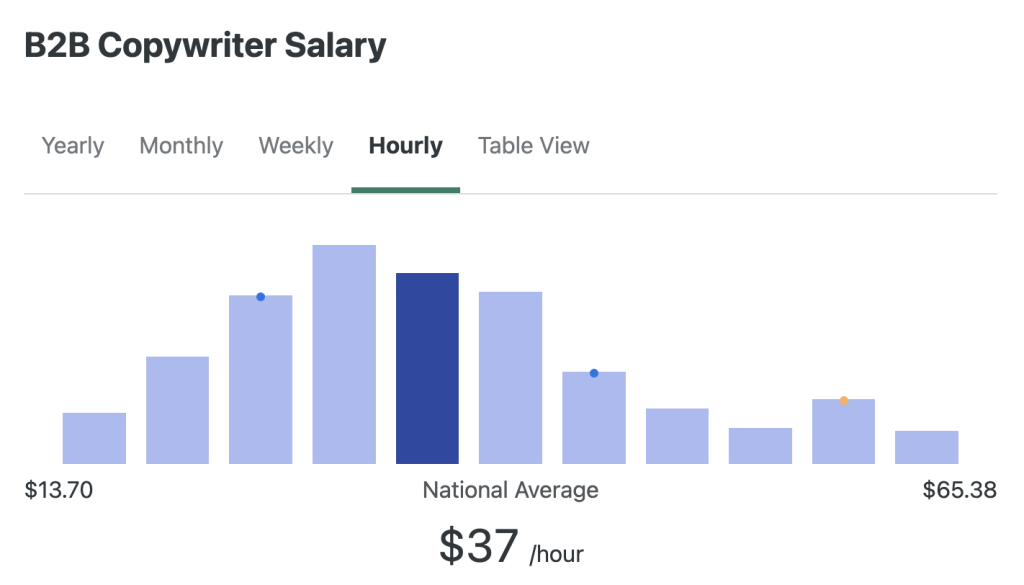
What does B2B copywriting look like?
B2B copywriting can take many forms:
- Website Copy: Clear, concise, and it communicates value.
- Blog Posts: Often more in-depth and focused on industry insights.
- Case Studies: Success stories that showcase how a business’s product or service has helped another business.
- Whitepapers and Ebooks: These are the lead magnets. They’re educational and aimed at helping businesses make informed decisions.
- Email Campaigns: Highly targeted, with a clear call-to-action. They’re about nurturing leads, not hard selling.
The key is always value. Every piece of content should offer something useful to the reader.
Is B2B writing hard?
It can be challenging, but “hard” is subjective. It’s about complexity and depth. B2B topics often require a good understanding of the industry, the product or service, and the needs of the audience.
You’ll need to do a fair amount of research and be able to break down complex information into digestible, engaging content.
But hey, challenge equals opportunity. If you can master B2B copywriting, you’ll be in high demand. Businesses are always looking for writers who can convey their message clearly and compellingly.
Remember, it’s not about selling a product; it’s about solving a problem. Your writing should be a bridge between a business’s solution and their customer’s need.
If you can build that bridge with your words, you’re going to be a fantastic B2B copywriter.
B2B Copywriting Tips
Okay. You know what B2B copywriting is and the difference between B2C.
Cool.
Now, I’m going to teach you seven strategies you can begin applying right away.
Put your twist on them. Have fun. Experiment.
1. You’re writing for entrepreneurs, not the everyday consumer
Entrepreneurs don’t have the same problems and interests as an everyday consumer.
I’m talking about chief operating officers, founders, vice presidents, etc.
Those guys are worried about budgets, scaling, growth, and similar, right?
Everyday consumers, on the flip side, are worried about the latest trends, material goods, and things like that.
It’s important to clearly define the two.
This will help you write copy that appeals to the reader’s emotions, thoughts, and values.
Which is exactly why you should create a buyer persona.
This maps out the customers:
- Demographics
- Strengths
- Weaknesses
- Emotions
- Values
- Questions/Concerns
- Problems
- Etc.
You can reference it every time you write to ask yourself, “Does this match the target audience?”
The end result is copy that deeply resonates with the audience and performs much better.
This also involves personalization.
Everage performed a study and found that 56% of marketers believe personalization has a strong impact on advancing customer relationships.
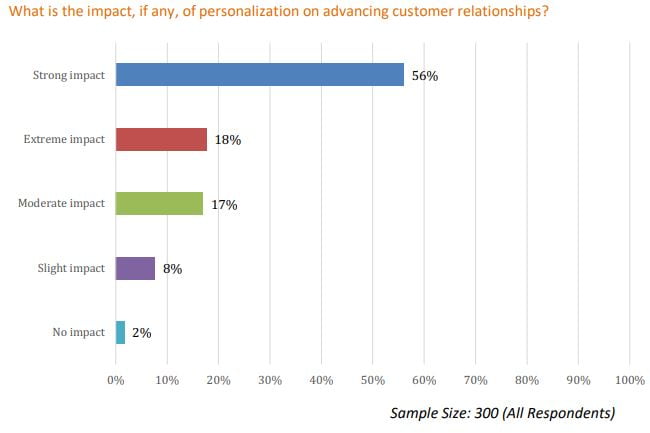
It’s not made for everyone.
It’s made for them.
That shows a company cares and has done its research.
This is the opposite of what a lot of businesses do; they blast emails and campaigns that are generic in hopes they’ll convert.
These are some common startup problems, for instance:
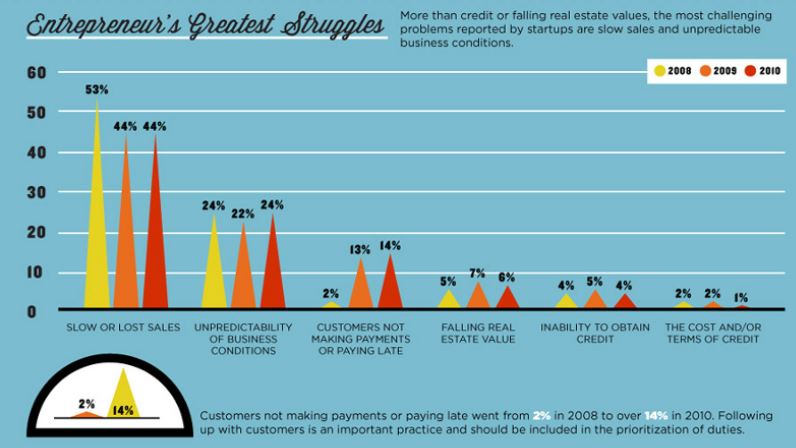
You could focus on these points—like slow sales and unpredictability—in the copy to make a product irresistible.
There’s an endless ocean of data, case studies, and market reports online for you to use. There’s no excuse not to have personalized copy.
Take it a step further with primary research: questionnaires, focus groups, surveys, etc.
2. Casual isn’t unprofessional
There’s a big misconception in copywriting…
Casual writing is unprofessional.
Not even close.
You don’t have to write like you have a stick up your butt.
In fact, you should probably do the opposite.
Buzzwords, technical jargon, and writing like a midterm are going to bore customers away.
Additionally, customers aren’t going to buy something they don’t understand.
Take the two following messages, for example:
- Get a mobile-responsive and SEO optimized website with modern UX and UI.
- Get a WordPress website that improves branding, leads, and web traffic.
The second is much simpler, right?
Unless the customer is a tech wiz-kid, they won’t understand what UX, UI, and SEO are. (Nor the value.)
That’s why it’s important to keep things simple. How would you describe the product to the customer over a beer?
That brings me to my next point.
3. Write as you speak
A lot of copy is stiff. It sounds like a textbook.
That’s no good.
It’s a guaranteed way to be mediocre and have no personality.
Unfortunately, a lot of B2B copywriting has the personality of drying paint.
One of the fastest ways to cure this INSTANTLY is by writing as you speak.
Heck, I’m doing it right now.
Read the copy in your head as you type, and imagine you’re speaking directly to the customer.
Perhaps it’s face to face, over a cup of coffee, or whatever feels comfortable for you.
This makes writing more natural, fluid, and casual.
Otherwise, it’s easy to get overly technical, and the material sounds like a college syllabus.
It takes practice, too. You won’t get it on the first shot.
Writing like you speak also means you’ll need to tick off grammar scholars in the meantime.
It’s normal to break rules while making writing more human-like.
Ironic, huh?
We’re humans writing to humans, after all.
4. Back up logic with emotion
Why do people buy products?
Wrong! (Unless you answered correctly.)
It’s because of emotional reasons.
Sure, that co-founder needs a SaaS product to automate her social media marketing… but is it really?
Not quite.
Saving time for CEO-level tasks and not having the skills herself are closer to the real reason.
Knowing this is like a superpower. You can write copy that aligns with both their logical and emotional reasoning.
Because here’s the thing.
You do need to write about features and appeal to the logical side of B2B customers.
That means listing features, specs, and all of that boring stuff. They need to know it.
However, don’t skimp out on emotional reasons, either.
Back up all of your logical points with the emotional or experiential benefit.
Automatic social scheduling? That’s time saved, which can be invested elsewhere.
Analytics and data? That’s optimizations and insights to improve performance with less effort. Also, no more being in the dark wondering what’s happening.
Adjustable pricing plans as you scale? That’s peace of mind and cost savings.
You get the point.
5. Get straight to the point
Readers need to be interested right away.
Not after three paragraphs.
Not after ten minutes of reading.
It needs to be immediate.
This ensures that they continue reading the rest of the copy, eventually reaching a call to action or point of sale.
This stems from—once again—having a buyer persona and knowing the customer like your best friend.
You can nosedive into the information they care about. Not fluff that makes them snore.
Next time you’re writing B2B copy, put the most important information first for this reason.
I also suggest using the AIDA copywriting formula. It stands for:
- Attention: Grab their attention with a mind-boggling statistic, bold statement, question, or life-changing product feature.
- Interest: Generate further interest by elaborating on the product, features, and value proposition.
- Desire: Use emotional power words and paint a picture of using the product to make them desire it.
- Action: Place a call to action at the end to buy, schedule a demo, etc.
6. Write a mouthwatering headline
What’s the first thing readers see on a piece of copy?
Spend time re-writing the headline of any B2B material until it’s perfect.
It should be the Picasso of headlines.
Many writers struggle with writing headlines, though. It’s normal.
You simply have to use the right strategies and practice like any other field.
Read my article on copywriting exercises afterward on that note, too.
However, these are some strategies you can use to write epic headlines for B2B sales copy:
Get very, very, very specific
What’s a vague headline going to explain to customers?
Not much!
Adding detail through numbers, precision, and explanations make headline exciting. Customers also know what to expect reading the rest of the copy.
Look at Pipedrive:
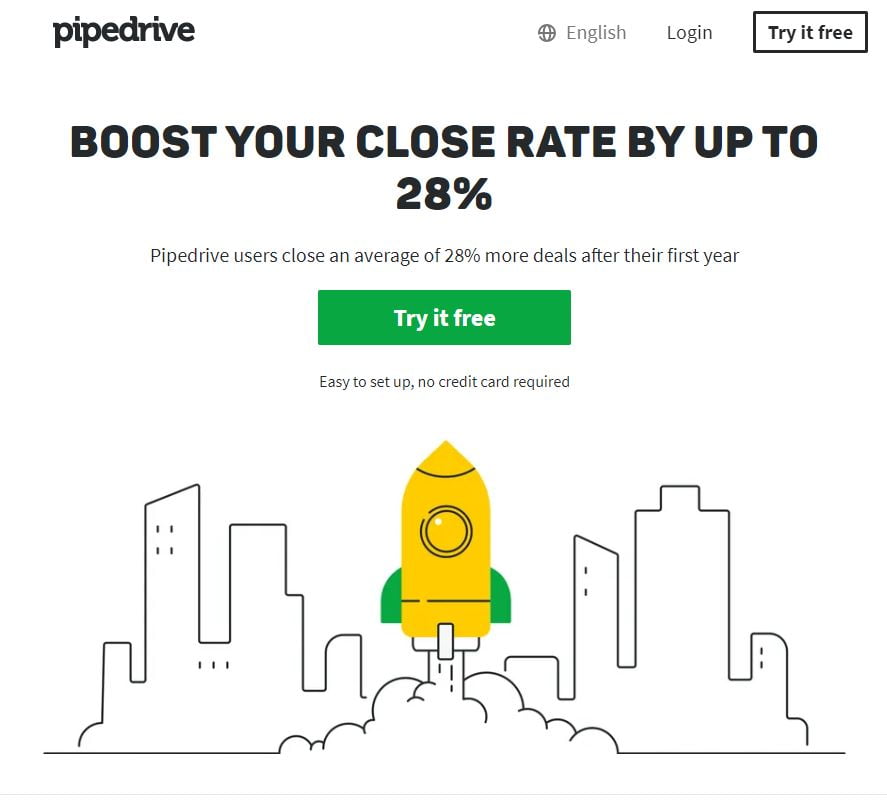
The headline on their homepage is “Boost your close rate by up to 28%.”
Leaving out the “28%” wouldn’t have had the same impact because that’s a massive improvement.
That’s enough to make any sales expert smash the CTA button until their mouse breaks.
You can do the same by providing as much detail as possible in the title of any B2B material: blog posts, sales letters, landing pages, etc.
What’s in it for the customer?
Customers will be much more likely to click through or engage with copy if they know the benefit of doing so.
Otherwise, it may have them looking somewhere else.
Ottawa Logistics does this great here:
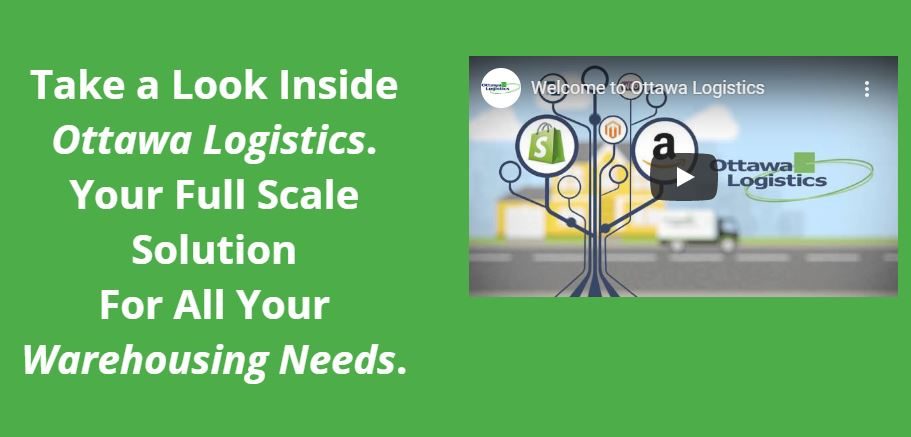
“Your Full Scale Solution For All Your Warehousing Needs.” sums up what you can expect from working with their company.
While it could be slightly more detailed, it does a good job.
You can do the same by stating a benefit that the copy will elaborate on, such as:
- “Skyrocket Your SEO Rankings With Our Search Services”
- “Learn How to Easily Scale Content Marketing in Our Next Webinar”
- “Uncover Secret Tactics The World’s Best Accountants Use”
Urgency never fails
Imagine this…
You’re walking by a lemonade stand run by a little kid.
He’s got jugs upon jugs of lemonade.
You wouldn’t be in too much of a rush to buy a drink, right?
But, if that kid only had a few cups left, you’d be throwing quarters at them.
People will take massive action if there’s only a limited amount of time to acquire something.
This phenomenon can be woven into headlines by using words like:
- Don’t miss out
- Now
- Today
- Secret
- Uncover
- Classified
- Limited time
- You won’t believe
- Rare
- Unheard of
- Unbelievable
- Jaw-dropping
- Etc.
The goal is to get readers so interested in what you have to offer that they don’t want to miss out.
This is also called FOMO or fear of missing out.
Read my blog post on FOMO copywriting to learn how to master the technique.
7. Use Hemingway Editor for polishing the copy
After you write the best copy in the world, it’s time to kick back with a glass of whiskey, yeah?
I wish.
It’s now time to edit and proofread the copy.
I recommend using a free tool called Hemingway Editor.
Copy and paste any copy into the text box to begin.
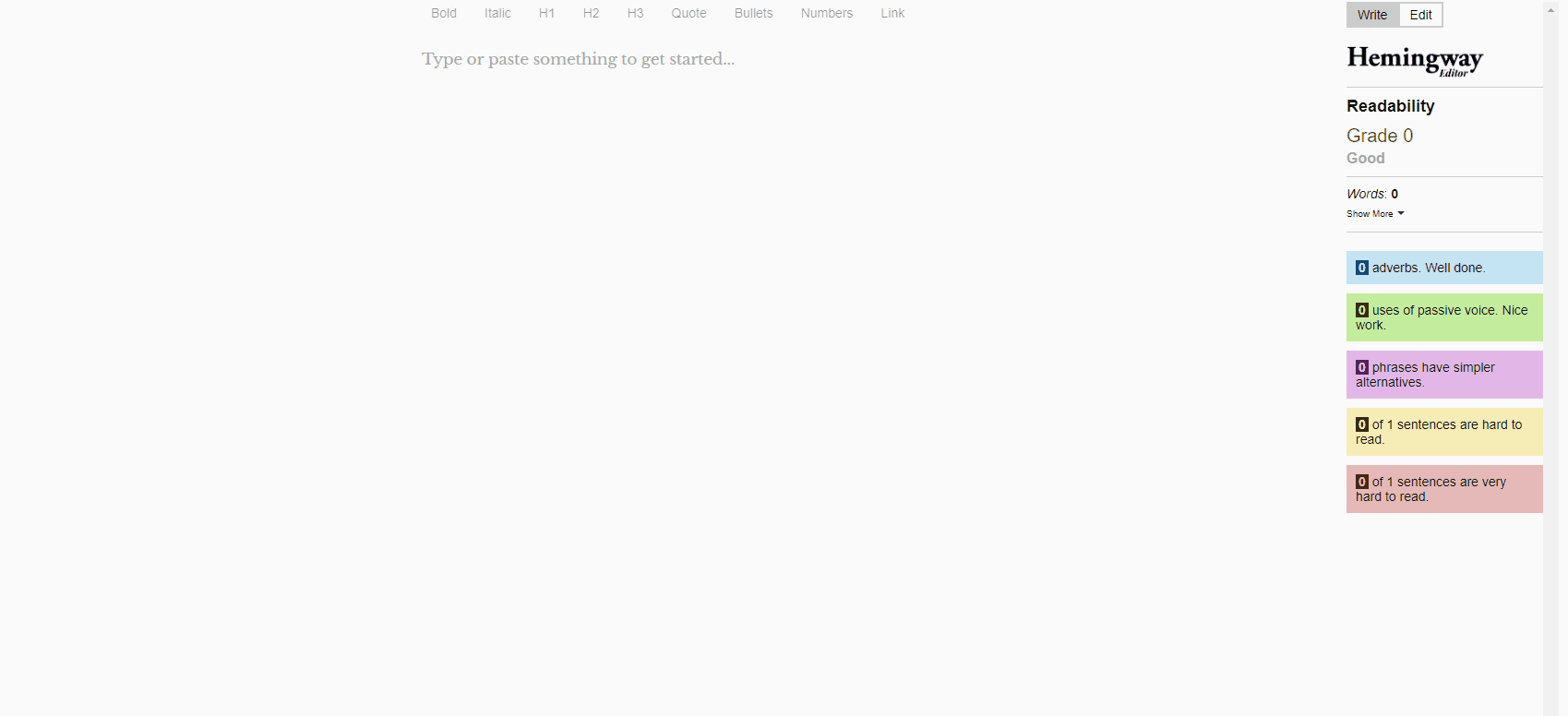
It will highlight passive voice, complex sentences, and other suggestions for improvement.
The reading level score is also very important.
B2B copy doesn’t have to be overly complicated.
Try to aim for a grade 4–8 reading level.
This way, you reach a larger audience and make copy easy to flow through.
Final thoughts on B2B copywriting
If you sell to other businesses, it’s critical to deliver good sales copy that communicates the value you offer and converts more leads.
It’s not uncommon to see B2B brands lack effective sales copy, and unsurprisingly, they aren’t generating the kind of revenue they could be.
Use the strategies outlined in this article to improve your marketing material, and enroll in my copywriting courses to learn more.














